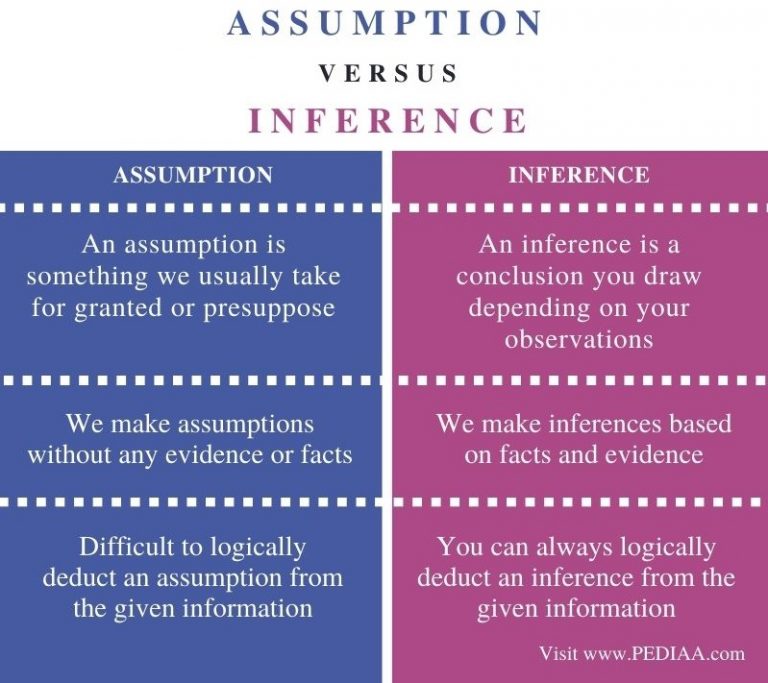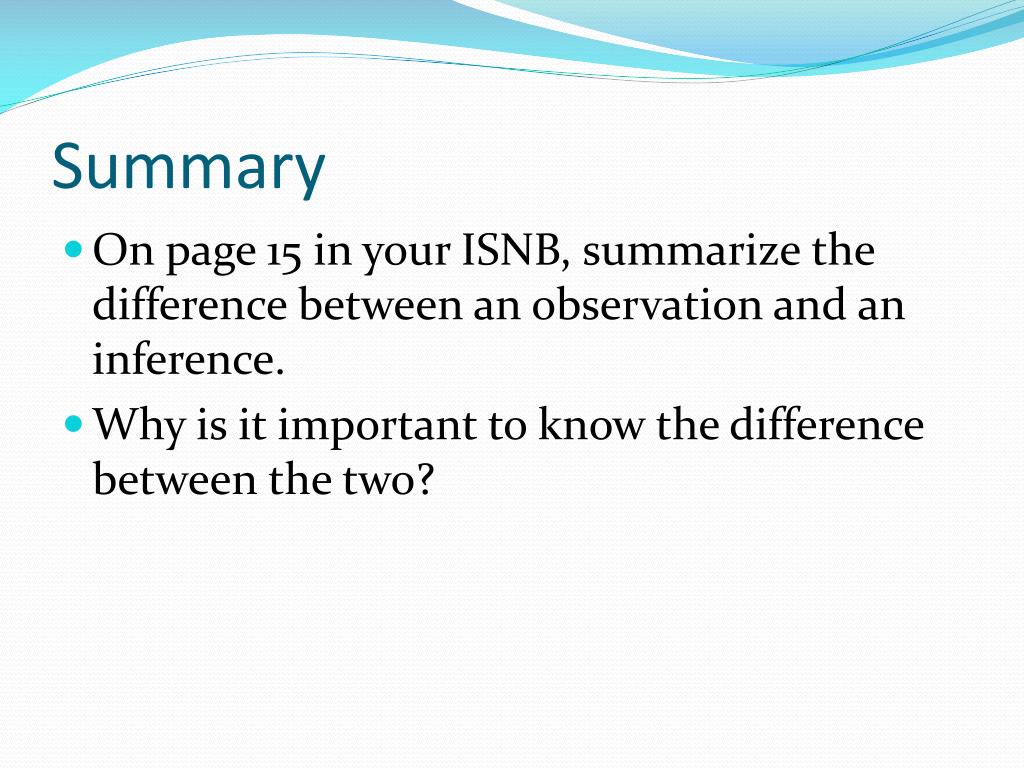
What are inferences?Īn inference is an idea or conclusion that’s drawn from evidence and reasoning.

Let’s quickly look at what each type of observation includes, how they differ, and the strengths and weaknesses of each type of observation. When it comes to observational research, you have three different types of methodologies: controlled observations, naturalistic observations, and participant observations. What are the three types of observations? There are several different approaches to observational research including naturalistic observation, participant observation, structured observation, case studies, and archival research. Logically deducing a conclusion by reasoning. Taking decision about the collected information.Īttentively monitoring of the subject under study. What do observation and inference have in common?Ĭollection of information without questioning respondents Types of observation Participant Observation Non-participant Observation Direct Observation Indirect Observation Controlled Observation Uncontrolled Observation. What is observation and types of observation? What are the examples of observational study?Įxamples of Observational Studies Consider someone on the busy street of a New York neighborhood asking random people that pass by how many pets they have, then taking this data and using it to decide if there should be more pet food stores in that area.

Scientific Definition of Inference In science, there are a few different types of inferences, but in general an inference is: “An educated guess made through observation.” You might use these inferences to share a potential reason why something happens or how it happens. HYPOTHESIS: (Similar to a prediction) Using research and background knowledge to make a guess about something that has NOT yet happened.

INFERENCE: Using background knowledge to make a guess about something you have observed. What's the difference between an inference and a hypothesis? On the other hand, an interpretation is an attempt to figure out what has been observed. … Such an observation is a quantitative one, as opposed to a qualitative one (no measurements). What is the difference between an observation and an interpretation?Īn observation is any report from your 5 senses. What is the difference between an observation and an inference? An observation is a direct method of gathering information, while an inference is combining your observations and you already know to draw conclusions. Which best describes the difference between an observation and an inference? A zoologist watching lions in a den after prey is introduced to determine the swiftness of the animals’ response. An astronomer looking at the night sky and recording data regarding the movement and brightness of the objects he sees. What are 2 examples of an observation?Ī doctor watching a patient after administering an injection. An example of observation is making the statement that a teacher is proficient from watching him teach several times.

An example of observation is the watching of Haley’s Comet. The definition of an observation is the act of noticing something or a judgment or inference from something seen or experienced. Example: I see that the red and green flowers are growing. Observations can be made only with the five senses. It might be helpful to have some examples. 39 What is inference in a sentence? What is the difference between observation and inference examples?Īn observation uses your five senses, while an inference is a conclusion we draw based on our observations.


 0 kommentar(er)
0 kommentar(er)
